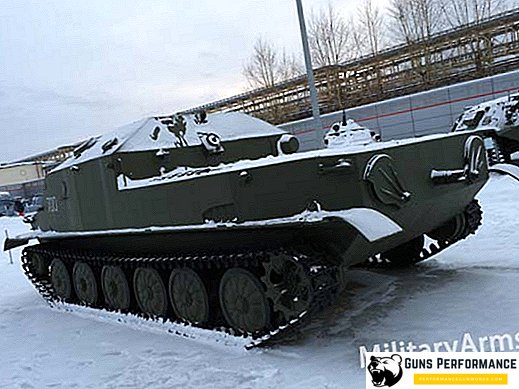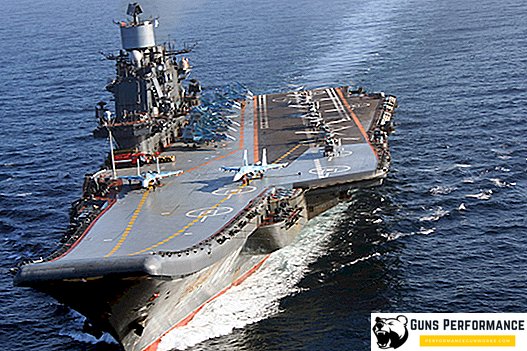Each designer or design office has special projects in which they have reached the pinnacle of professional skill. For the Antonov Design Bureau, the An-124 Ruslan aircraft undoubtedly became such a project. Talking about this car, constantly have to use the epithets "unique", "not having analogues in the world", "so far unsurpassed." And indeed it is. Kiev aircraft manufacturers have created many excellent aircraft, but even in this series, the An-124 stands alone - for it is truly unique.

Today, this aircraft is the largest mass-produced transport aircraft. This aircraft has no analogues in the world in terms of dimensions and payload. An-124 set 21 world records, including a record for payload and a record for flight range.

An-124 "Ruslan" - a heavy long-range transport aircraft, created primarily for military needs. This plane can be called a product of the Cold War. In those years there was a tough confrontation between the USSR and the USA. The aircraft industry was one of the key sites of this struggle, and this was especially true of transport aviation. As is known, war is the most complicated logistic operation. Troops need to be provided with all necessary and do it quickly. It should be noted that air freight is very costly. The cost of delivering one kilogram of cargo by air is very high, only the delivery of cargo into space orbit is more expensive. The most profitable mode of transport is sea, followed by rail and road. But they do not count money in a war, therefore military transport aviation is actively used during conflicts.
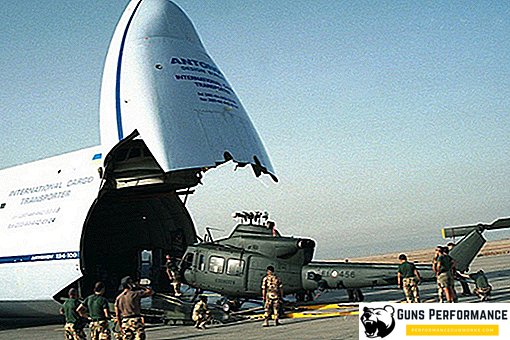
The story of the creation of the An-124 "Ruslan"
In 1965, in the Antonov Design Bureau of Kiev, the heavy transport aircraft An-22 was developed, and as a result, the Soviet Union became the owner of the world's largest cargo aircraft (it can be noted that the An-22 is still the largest aircraft with a turboprop engine). But the triumph turned out to be short-lived: in the United States, work was in full swing on the Lockheed C-5 Galaxy, which was much more powerful than the Soviet aircraft. In the USSR, it was decided to create an even heavier transporter. Soviet designers were given the task of creating an aircraft with a carrying capacity of 120-140 tons. There were several reasons for this decision: firstly, it was about prestige, and such things were treated carefully in the USSR, and secondly, an increase in the carrying capacity of military transport aircraft gave a tangible advantage in speed of deployment of troops and their supply.
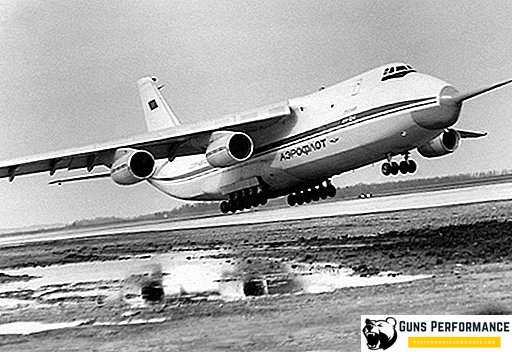
Ukrainian aircraft manufacturers immediately joined in the work on the new aircraft, the benefit of the developments they had in this direction was enough. But the task that they faced was very extraordinary: no one had ever built such aircraft. It was necessary to solve a lot of technical issues: from scratch to develop technologies and create equipment for working with parts and assemblies of enormous size. In 1970-1971, the Antonovs presented the projects of two aircraft, with four and six engines and a carrying capacity of 120 and 140 tons, respectively. In 1973, according to these drawings, a full-size model of the aircraft was created. The size of the new winged car hit. But in order for this model to become a production aircraft, almost all of its technical characteristics had to be improved.
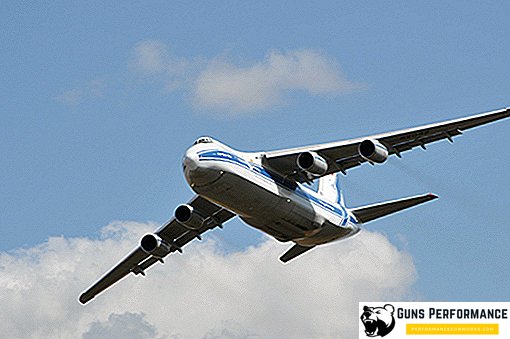
A special group was created to improve the aerodynamics of the aircraft, as well as its strength and safety. The possibility of using new materials and technologies in the design of the future An-124 was investigated. Specialists from the best institutes and scientific centers of the USSR took part in the work. The An-124 can safely be called the crown of engineering thought of the Soviet Union. When creating the aircraft, many new materials and technologies were used, many of which had no world analogues. Due to this, it was possible to create a car with such unique technical characteristics.
The first flight of the aircraft took place on December 24, 1982. In 1985, he was first shown to Soviet journalists, and then presented to the world public at an aviation exhibition in Paris. In the same year, the An-124 immediately set 21 world records, including flight range and payload records.
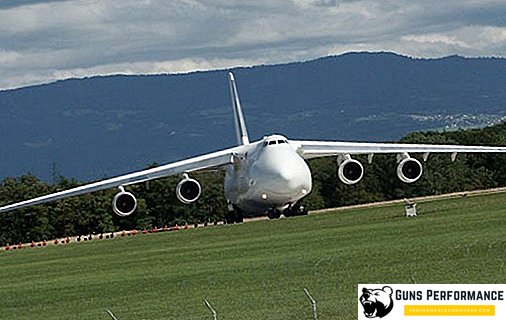
With the collapse of the USSR, the production of these machines gradually faded away. The last aircraft was released at the Ulyanovsk aircraft factory in 1995. In 1992, a modification of the An-124 was created, a modified model of the aircraft was named the An-124-100. Equipment for landing was removed in the car, radio navigation systems were changed, new instruments and inscriptions in English appeared in the cockpit, additional amenities were created for the crew. The cargo compartment was modernized, engines were also upgraded, the work of which had previously caused complaints. Most likely, precisely because of engine problems in 1997, one of the worst air crashes in Russian history happened in Irkutsk.
One of the most tragic pages in the history of the An-124 was the terrible disaster in Irkutsk on December 6, 1997. On this day, the An-124-100, taking off from the airfield of the aircraft factory in Irkutsk, crashed due to the failure of three engines and collapsed into residential buildings. In this disaster killed 72 people, including all members of the crew of the aircraft. The cause of this disaster has remained a mystery. Flight recorders were badly damaged. A government commission has left for Irkutsk. The main reason for the emergency was called structural defects of the aircraft engines. The Church of the Nativity of Christ was erected on the site of the tragedy in Irkutsk.
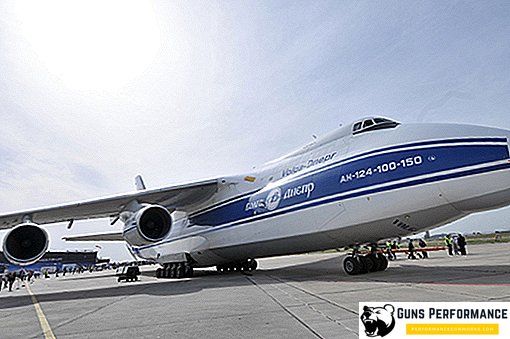
Recently there have been repeated attempts to resume the mass production of this unique machine, because the demand for such cargo planes on the world market is very high.
An-124 Ruslan device
The aircraft was created according to the classical scheme, with highly spaced wings of a small sweep and four turbojet engines. The cockpit is located in front. The An-124 has two decks: the lower one has a cargo compartment, the upper one has a crew cabin, a room for a changeable crew and for accompanying cargo. Decks are divided into hermetic compartments. The plane has two cargo doors.
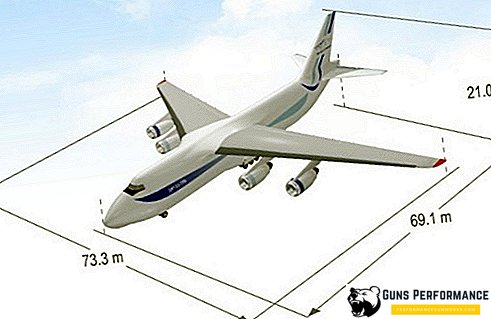
An-124 has a unique multi-rack chassis, consisting of 24 wheels. This allows the machine, despite its huge size, to use unpaved runways.
Another feature of the An-124 is the presence of two cargo hatches in the front and rear of the aircraft. The cargo compartment is sealed and equipped with loading equipment. The aircraft’s landing gear allows the aircraft to change its ground clearance and the fuselage angle, which makes loading work much easier. The chassis is equipped with a system of rotation of the pillars and subsidence system. The floor of the cargo compartment is made of titanium and can withstand heavy loads.

Specifications
Dimensions | |
| Wingspan, m | 73,3 |
| Length m | 69,1 |
| Height, m | 20,78 |
Weight, kg | |
| Empty | 173000 |
| Normal takeoff | 392000 |
| Maximum takeoff | 405000 |
| Engine | 4 * TRDD D-18T |
| Maximum speed, km / h | 865 |
| Cruising speed, km / h | 750-800 |
| Practical range, km | 4500 |
| Ferry range, km | 16500 |
| Practical ceiling, m | 9500 |
| Crew | 6 people |
| Payload kg | 120000 - 150000 |

Modifications of the An-124 "Ruslan"
- An-124 - basic model
- An-124-100 - modification of the An-124, designed specifically for civilian traffic
- An-124-100M - An improved version of the previous model with improved avionics. It can carry up to 150 tons of payload. It is actively used by Russian and Ukrainian airlines for commercial shipments.
- An-124-102 - An even more perfect modification with the new control system. The crew of 3 people.






